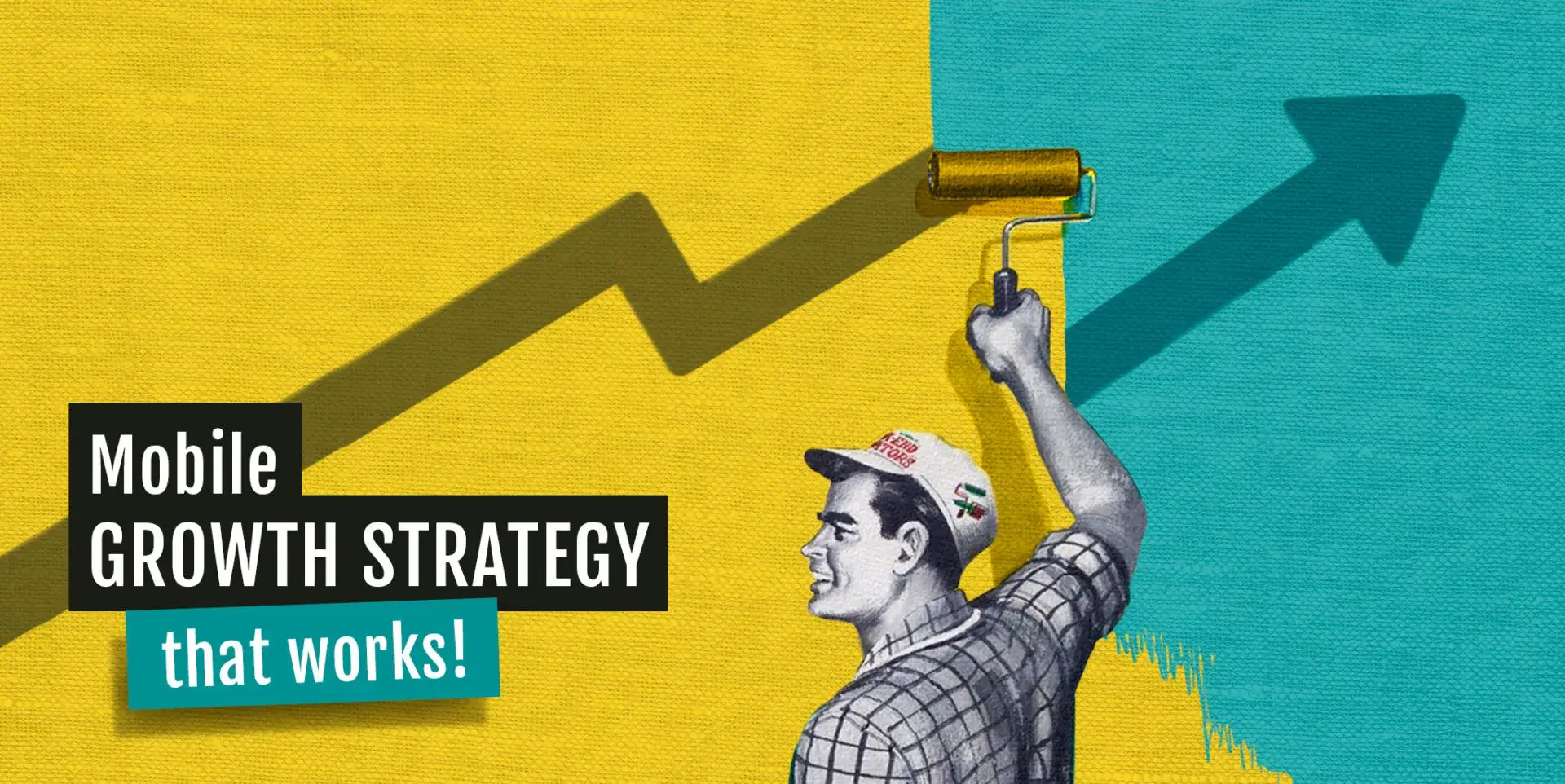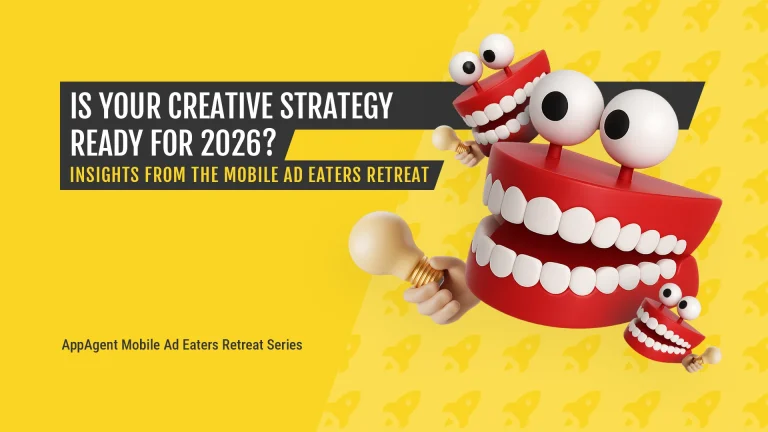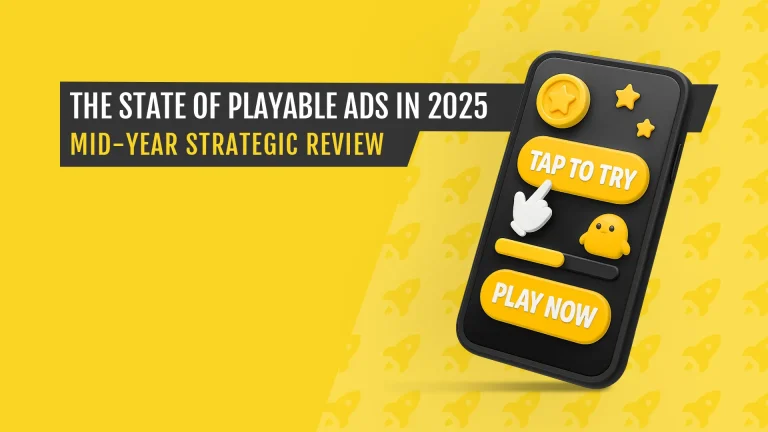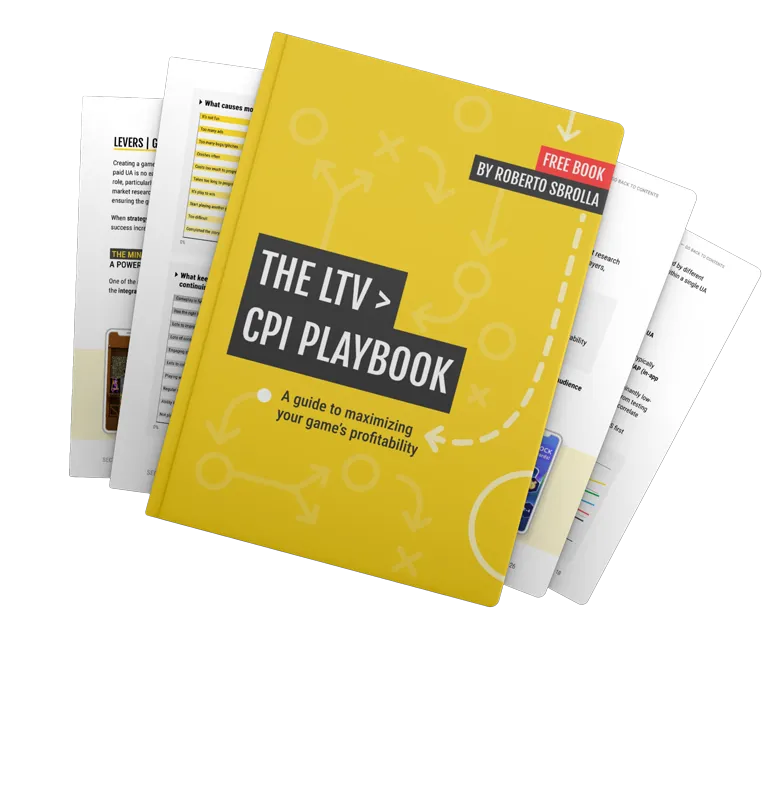To learn more about mobile marketing industry insights and best practices, like which mobile app growth strategy actually works, sign up for the AppAgent newsletter here.
For sustainable mobile app growth, you must focus on activation first, not acquisition! Let’s talk about how to avoid the ‘leaky bucket’ problem and efficiently grow your mobile app.
Here’s a recent conversation that I had:
“We want to double our mobile app user base in the next six months with a budget of $150,000. You’re the experts on app growth hacking, so you can help us, right?”
I took a deep breath.
“I don’t know,” I said. This was my honest answer to the game publisher on the conference call.
“I don’t know, because, to provide a meaningful answer, I need to understand your current number of daily active users (DAUs), the retention curve, segmented lifetime value (LTV) of users, and the cost of acquisition (CAC) for different segments of mobile users. Only then can I say if your growth target is feasible and provide you with a tailor-made mobile app growth strategy.”
And then, there was a silence…
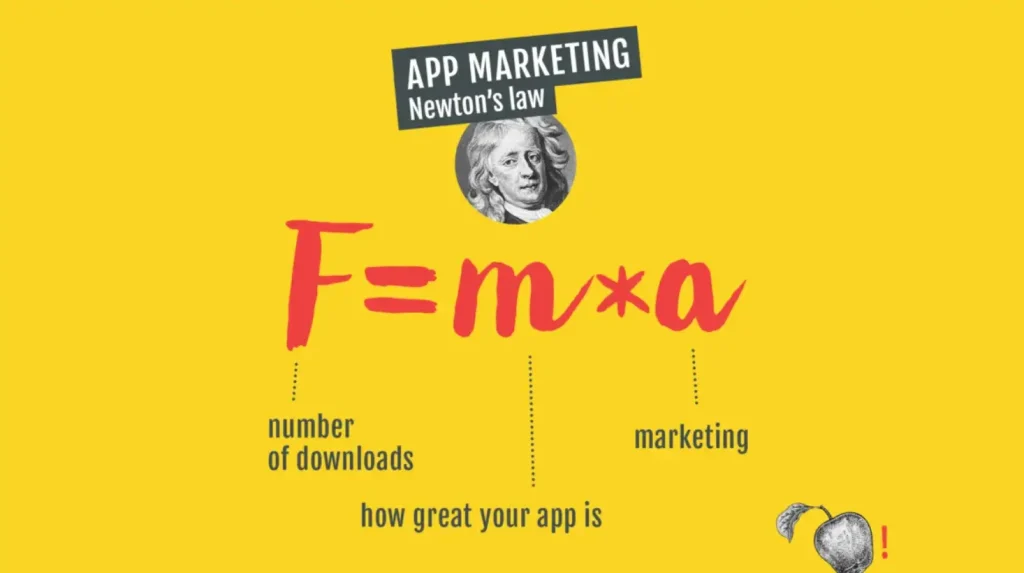
User Acquisition is the Easy Part of Mobile App Growth Strategy
The siloed thinking about user acquisition (UA) is most often seen in companies that aren’t mobile-first. This can also occur among founders and marketing managers who lack understanding of various areas such as product design, growth hacking, and marketing analytics.
The ‘leaky bucket’ problem is something that we have to regularly explain to our clients – and help them fix. It occurs because advertisers tend to overlook the underlying problem behind the flat, or even declining, curve of their mobile app’s user-base (which, in most cases, is caused by the product, not acquisition).
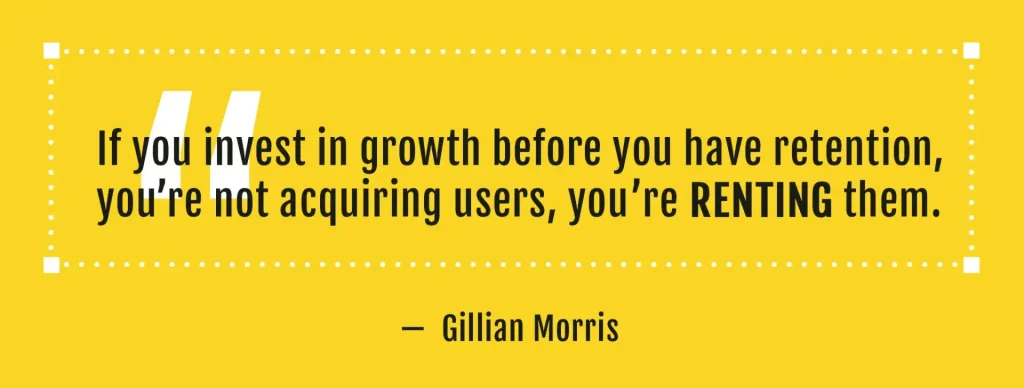
The truth is that user acquisition is the easy part of mobile app growth when compared to activation, retention, revenue, and referral (AARRR of the famous pirate metrics model by Dave McClure).
These five metrics represent and reflect the user flow. The reality is that most startups tend to prioritize the first one: acquisition.
The main issue with this framework is that it describes the order in which the user interacts with the mobile app, rather than how the company should prioritize the work. Focus too much on acquisition and you’ll end up with the leaking bucket problem!
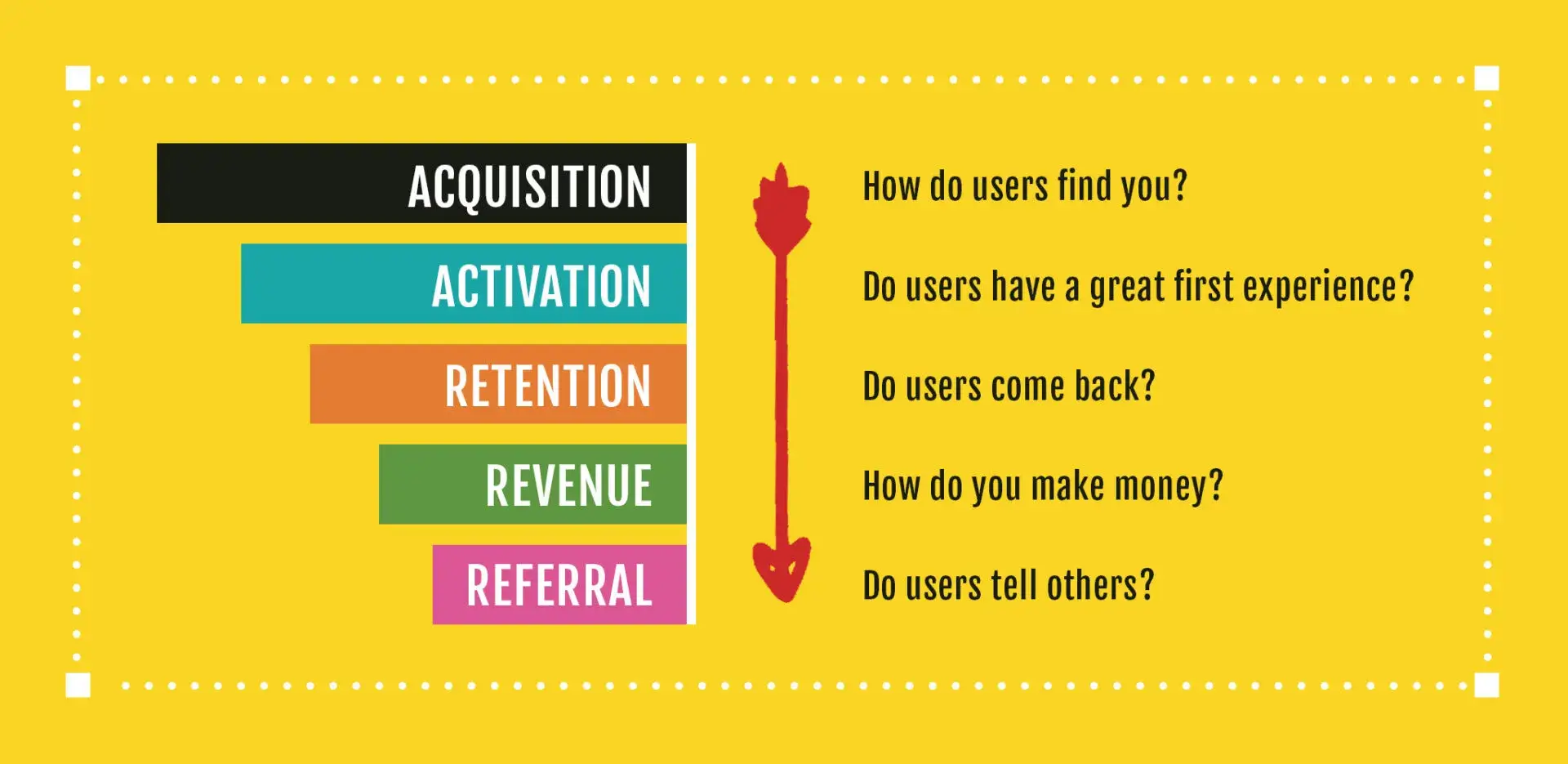
The ‘Full Funnel’ Mobile App Growth Strategy
If I’m asked my opinion on the most effective app growth strategy, I always recommend the Full-Funnel Approach.
Analyzing the user journey using existing data leads to one of two scenarios:
- The mobile app is healthy, retains users and generates revenue. It’s ready to scale.
- The mobile app has issues related to activation, engagement and/or monetization. These need to be fixed before investing in UA. And that’s especially true in the post-IDFA era where targeting capabilities are worse and the necessity of a high LTV critical!

In case you are not sure if your app is ready, feel free to reach out at hi@appagent.com.
Over the years we have developed and refined viability calculators for mobile apps and can run a free scalability assessment for you.
Scenario 1 – A Healthy App Ready to Scale
Mobile apps with strong metrics are rare, but if you have one the only remaining question is: ‘how much can it scale?’
The answer to the question is closely related to two metrics: the ratio between lifetime value and cost per install (LTV and CPI), and the size of the addressable market.
Understanding LTV, CPI, and Market Scalability
The (positive) ratio between LTV and CPI shows the buffer against growing user acquisition cost before the UA eventually becomes unprofitable. When starting to invest in paid UA on ad networks like Facebook, you should go through three stages:
1. High CAC in the launch phase due to limited learnings of the best targeting, creatives, optimization type, lack of data, etc.
2. Low CAC coming with learnings and tapping into the most relevant users like Early Adopters for the lowest price.
3. Growing CAC caused by the extraction of the top users over time. This leads to a decrease in the relevance and quality of the base and, at some point, your UA strategy will become ineffective.
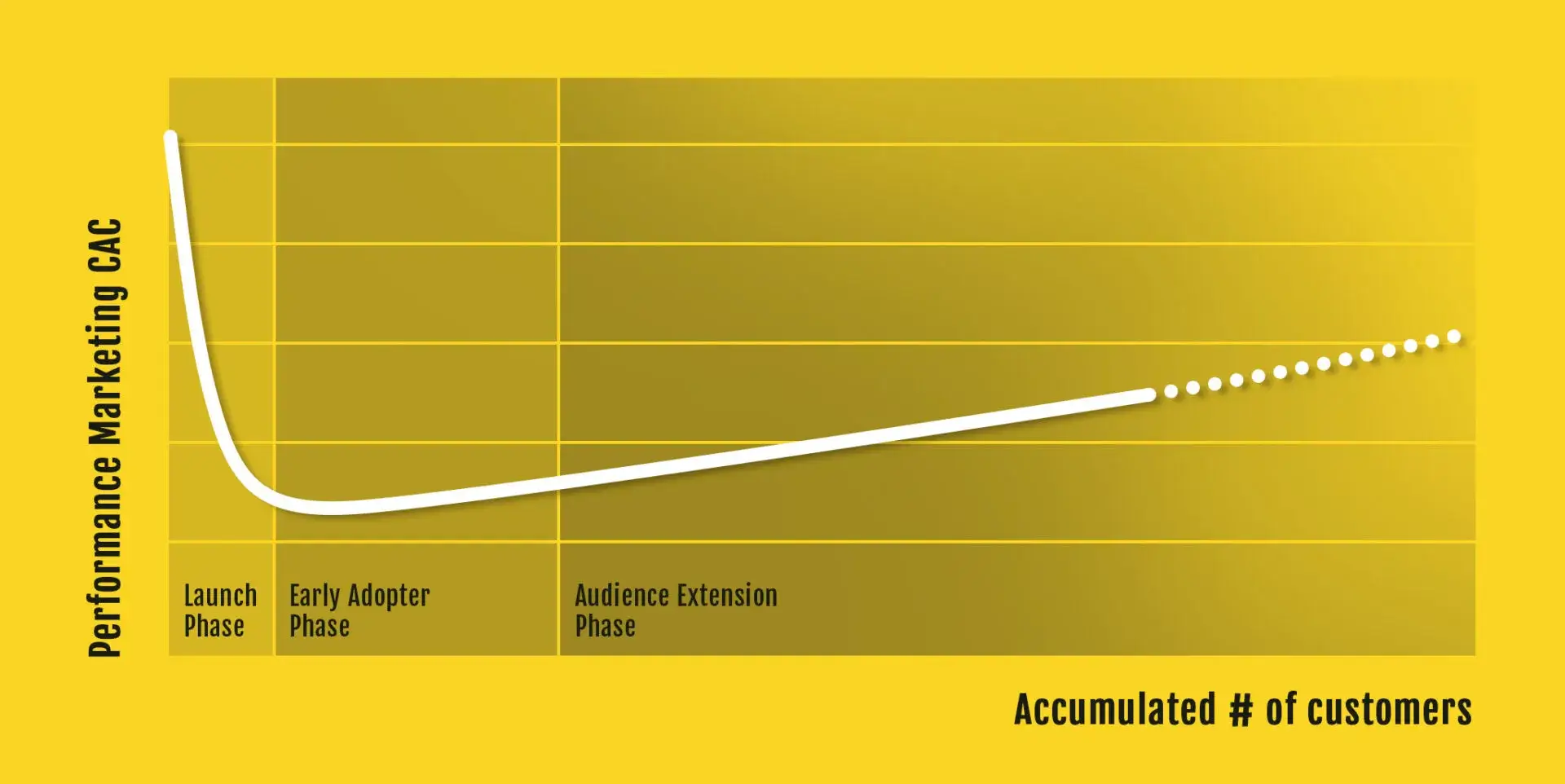
The second aspect—the total addressable market—is highly related to your product and its focus. On one hand, the more niche your mobile app or game is, the more engaged users you will attract, but the smaller the potential pool is.
On the other hand, mobile apps with a broad appeal are competing for the attention of a much larger audience who are less likely to deeply engage with you—and less likely to want to pay for your product or service.
The limited size of the addressable market could be a serious issue if you choose a narrow segment. In some cases, the available audience might be so small that you may be unable to acquire enough users or players to cover the development, upkeep and marketing expenses associated with your mobile app.
Case Study: How Small Giant Games Scaled to $400K Daily Revenue
During our fireside chat at PGC Helsinki just a few days after Empires & Puzzles became one of the top 10 grossing games in the US Apple App Store, Antti Paikalla shared insight into the process behind the game’s creation:
“When researching the mobile app market for our third game at Small Giant Games (SGG), we spent months analyzing top-grossing charts. We looked into what top-performing games had in common, examined which game genres were attracting highly engaged audiences willing to spend on a game, and determined the size of these audiences. All of these inputs eventually led us to define what is today Empires & Puzzles.”
If you are aiming for a big hit, follow the approach taken by the founders of SGG. This rather small 45-member team demonstrates how a methodological and data-driven approach to mobile business can pay off. They’ve managed to scale a game that was delivering an impressive c/a $400K of daily revenue when Zynga announced the acquisition of the Finnish studio.
Scenario 2 – A Mobile App Experiencing Issues Isn’t Ready for Scaling
Some product issues can be fixed easily. But in some cases, even major tweaks to the product proposition won’t be enough to save it. Distinguishing whether your app can be salvaged or not is the hardest task for any product manager.
The most impactful pirate metric is activation. Luckily for you, fixing issues at the activation stage usually requires less investment than tackling issues that relate to long-term retention or monetization.
If you are unable to fix the drop in the conversion funnel at the activation stage, it means the value proposition isn’t strong enough and the product needs to be fundamentally changed…or killed.
Here, Dani Hart from GrowthHackers explains why activation is such an important step in the user journey:
“Without getting people to see the value of your product, they won’t come back which will make retention, referral, and revenue near impossible. Activation is where the most leverage is…if I could increase my conversion rates during the activation stage of the customer lifecycle, It would be much easier to decrease the cost per acquisition and provide an experience that makes the user likely to return.”

The Role of Retention and Paywall Optimization
Once you can see that your product/market fit is positive and there’s a healthy activation ratio (at least 80% of users finished onboarding, but this value is highly dependent on the app category and acquisition source), you should focus entirely on retention.
You should approach retention optimization in a step-by-step method; focus on fixing Day 1, then Day 3, then Day 7 retention, gradually building up to really long-term engagement.
In the mobile industry, if you’re able to retain existing users at a steady rate, your chances of successful monetization are much higher. But this won’t happen overnight—it took eight years for Facebook and over three years for Snapchat to introduce monetization models.
But if you do it right, you can achieve amazing results. One such example is Amazon, as analysts have pegged Prime’s yearly retention rate at over 90 percent!
Another crucial area is paywall optimization. As Dan Burcaw from Nami ML explains, “a common mistake is to spend a lot of time on marketing, on product pages, videos, etc., but not paying enough attention to the paywall screen.”
A/B testing this critical point is essential for every app developer; we’ve seen massive revenue boost for our clients when using a rather basic set of tactics.
The New Mobile App Growth Strategy Handbook
Looking at the Full-Funnel Strategy leads me to an interesting question: are McClure’s famous metrics in the right order?
Yes, if you’re looking at them from the perspective of the user journey. However, I would dare to suggest that the answer is no if you are focused on the company’s priorities.
As a marketer, I may be shooting myself in the foot by saying that acquisition—or more specifically scaling the user base—should be the last task on any CEO’s list. But it’s what I believe.
Successfully marketing and monetizing over 50 mobile apps has led me to rearrange the pirate metrics into the following order:
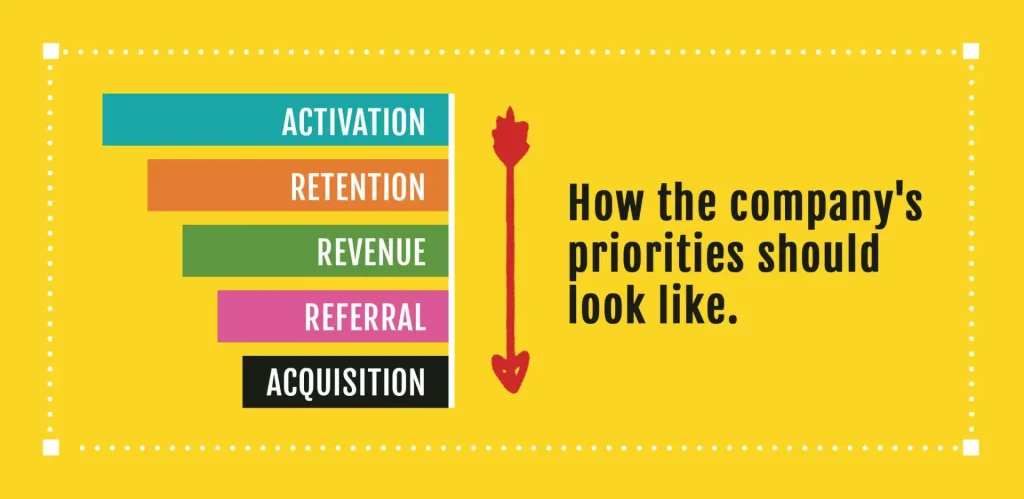
While activation is where you can make the largest improvements in user retention and the subsequent metrics, a good retention rate means that you’re not just renting app users, but transforming them into raving fans.
And when you’re successfully retaining your customers, everything else—like revenue and receiving free referrals (aka the “magic virality”)—can be figured out.
This is by far the most effective approach for your budget, where every dollar, euro or pound spent on acquisition will generate the highest possible return on investment.
It doesn’t mean you can’t run any acquisition before having the fully optimized product (which you never will, as it’s a never-ending process).
For collecting data and evaluating changes, you of course need a statistically significant volume of users. But you must spend wisely in order to learn, tweak, improve, and—only then—to scale. And if you need to grow even with a leaky bucket, invest in less expensive tactics such as ASO, cross-promotional activities or featuring rather than burning money on paid-for UA.
Final Thoughts
The goal of this post is the give startup founders and CEOs an explanation of how they should look at growth priorities.
The message is: “It’s not acquisition where you should start if you want to grow – it’s activation.
Activation creates the biggest leverage, and retention makes the biggest improvement of all subsequent metrics, including a significant impact on your cost of acquisition.”
It’s also one of the reasons that AppAgent’s offering has expanded into onboarding and paywall optimization. We see a massive lever there, and if you can increase LTV by 63% after a couple of A/B tests, only then can you really unlock your app growth potential.
Continue Reading
If you would like more detailed information on effective app growth strategy, I recommend reading the three articles below which will give you more clarity on how to apply this new mindset to your work:
- Andrew Chen on “The red flags and magic numbers that investors look for”
- Casey Winters on “Why Onboarding is the Most Crucial Part of Your Growth Strategy”
- Dejan Gajsek on “Slack Growth Study: The Fastest Business App Growth in History”
As this post is also touching the importance of activation, there are two other great libraries I would highly recommend you to check:
Many thanks to Tomas Petit, who helped me to compile this article with his apt comments, valuable advice and his brisk observations.
Happy growing!
